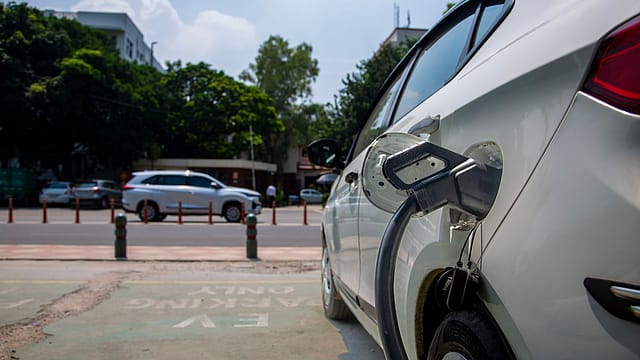EVs to cost less than petrol and diesel cars in India by 2027
ADVERTISEMENT

India is accelerating EV deployment at faster rates than the global average, giving the country a chance to catch up with the front-runners such as China, according to an analysis by Systems Change Lab.
Battery electric vehicles are likely to cross a second tipping point, where their purchase price falls below that of an equivalent petrol or diesel car, as early as 2024 in Europe, 2025 in China, 2026 in the U.S., and 2027 in India, shows an analysis by the Economics of Energy Innovation and System Transition.
This comes as India's all-electric vehicle sales tripled in one year from 0.4% to 1.5%, a feat that took the rest of the world three years.
"Coordinated policy action to phase out fossil-fueled vehicles by 2035 in the EU, US, and China can bring forward EV purchase-price parity by years, in those markets and beyond. It would bring forward the tipping point in India a whole three years from 2027 to 2024. It would enable a faster, cheaper – and therefore fairer – transition for everyone," says professor Mei Mei Aileen Lam of EEIST, a University of Exeter-led project.
Meanwhile, global electric vehicle sales are on track to meet or outpace even the most ambitious net-zero timelines and could account for more than two-thirds of market share by 2030, according to a new analysis by Rocky Mountain Institute (RMI) in partnership with the Bezos Earth Fund.
Combustion car sales peaked in 2017, and by the middle of the decade more will be scrapped than sold, meaning the overall fleet of combustion cars is about to peak and will be in freefall by 2030, the RMI research shows.
December 2025
The annual Fortune 500 India list, the definitive compendium of corporate performance, is out. This year, the cumulative revenue of the Fortune 500 India companies has breached $2 trillion for the first time. Plus, find out which are the Best B-schools in India.
Global EV sales will increase at least six-fold by 2030, to enjoy a market share of 62% to 86% of new vehicle sales, the analysis shows. By contrast, current established projections see EVs reaching only around 40% market share by 2030, despite having been consistently revised higher to try and keep up with the exponential growth already underway.
As internal combustion cars account for around a quarter of global oil demand and broader road transport accounts for nearly half, the exponential growth of EVs puts all of that oil demand at risk. Oil demand for cars peaked in 2019 and will be falling by at least 1 million barrels per day every year after 2030, eliminating expected growth in oil demand for cars, according to the RMI forecasts.
The analysis reveals economics is now overtaking policy incentives as the core accelerant of EV sales, with falling battery costs leading the shift. RMI expects battery costs to halve this decade, from $151 per kilowatt hour (kWh) to between $60 and 90 per kWh. By 2030, falling costs will, for the first time, make EVs as cheap or cheaper to both buy and run as petrol cars in every market globally.
EV dominance in car sales will inevitably drive electrification across other forms of road transport, from two- and three-wheelers to heavy-duty trucks, the report says.
China is on course for 90% EV sales by 2030, up from a third today, the analysis shows. China sold more EVs last year than the rest of the world combined, thanks to strong policy support. China dominates production of EVs, batteries, and other components, which is further driving down battery costs and making EV adoption easier all over the world.
